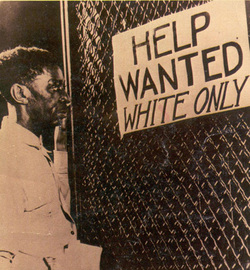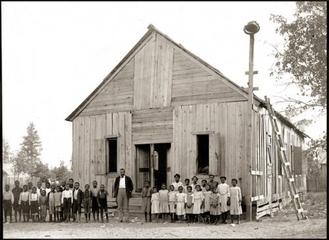Working Environment during the Jim Crow Era
The Immortal Life of Henrietta Lacks

"White farmers slept upstairs in lofts and private rooms; black farmers slept in the dark underbelly of the warehouse with the horses, mules, and dogs, on a dusty dirt floor lined with rows of wooden stalls for livestock and mountains of empty liquor bottles piled almost to the ceiling" (Skloot 21).
"…the work was tough, especially for black men, who got the jobs white men wouldn’t touch. They spent their days breathing in toxic coal dust and asbestos, which they brought home to their wives and daughters, who inhaled it while shaking the men’s clothes out for the wash. The black workers at Sparrows Point made about eighty cents an hour at most, usually less. White workers got higher wages…." (Skloot 26).
Rebecca Skloot, the author of The Immortal Life of Henrietta Lacks , does a remarkable job in portraying the contrast of what work was like for black workers in the mid 1900's. Black workers suffered with low paying jobs and harsh circumstances while White workers were rewarded higher salaries and a better environment solely because the color of their skin. Skloot's description is accurate but limited because this topic is not the main focus of her book. A broader outline of the contrast of work between white and black workers in the early 20th century will be explained below:
"…the work was tough, especially for black men, who got the jobs white men wouldn’t touch. They spent their days breathing in toxic coal dust and asbestos, which they brought home to their wives and daughters, who inhaled it while shaking the men’s clothes out for the wash. The black workers at Sparrows Point made about eighty cents an hour at most, usually less. White workers got higher wages…." (Skloot 26).
Rebecca Skloot, the author of The Immortal Life of Henrietta Lacks , does a remarkable job in portraying the contrast of what work was like for black workers in the mid 1900's. Black workers suffered with low paying jobs and harsh circumstances while White workers were rewarded higher salaries and a better environment solely because the color of their skin. Skloot's description is accurate but limited because this topic is not the main focus of her book. A broader outline of the contrast of work between white and black workers in the early 20th century will be explained below:
History of Labor during the Jim Crow Era

- African Americans given the lowest paying, un-skilled, and dangerous jobs.
- Excluded from higher-paying jobs.
- Excluded from higher-paying jobs.
- majority worked on land
- often abused if worked inside
- sharecropping was the most prominent form of labor
- workers were rejected from labor protections from New Deal
- Parents forced to send their children to work early
- African American children taken out of school